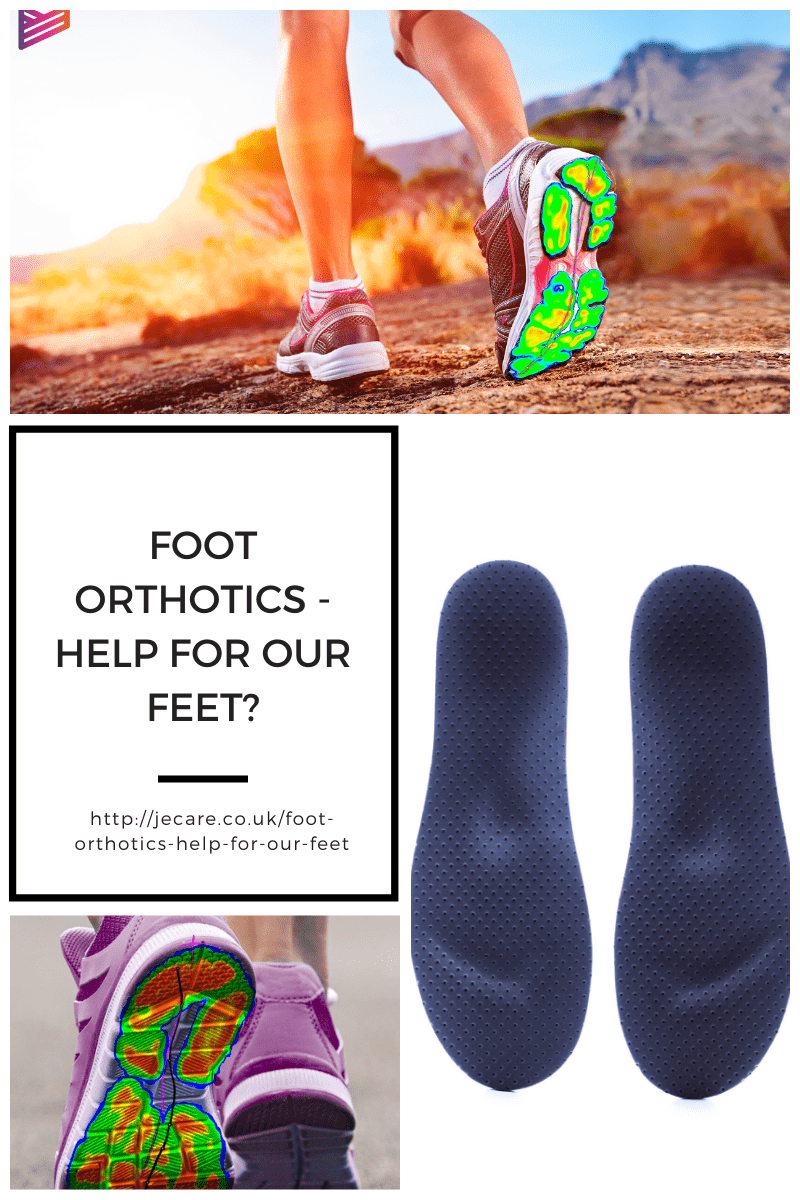
01 Dec Foot Orthotics – help for our feet?
When it comes to Foot Orthotics and why we may need them, JE Care in Chelmsford, Essex know our feet are crucial to leading a full life and sometimes we just do not appreciate what they do for us! They help us perform almost all of our daily functions and very often we don’t look after them well enough.
Our feet are very complex characters with each one made up of a large number of bones (26 in fact!), joints, muscles, tendons and ligaments all working in unison to ensure mobility, balance and support.
Over the years, they take on a lot of wear and tear and with an average of 75,000 miles by the age of 50, it is inevitable that at some point you will suffer with painful feet that could be a result of one of many of the below foot disorders.
How can Foot Orthotics and other treatments help?
There are a range of treatments available for foot conditions. JE care has partnered with some of the best foot orthotics and arch support manufacturers in the U.K. Along with some of the best technology companies offering state of the art scanning devices. Unrivalled by any competitor is our ability to assess objectively the influence of orthotics not just on the feet but more importantly on the spine and pelvis.
For more information or to book an appointment, please contact us on 07432 018449 or email clinic@jecare.co.uk or visit our Phits page
Here are a list of foot ailments and diseases
Gangrene
Gangrene can occur in the foot of a person whose diabetes is not under control. Gangrene is effectively the death of tissue due to decreased blood flow. Dry gangrene is normally a result of a condition such as diabetes. Wet gangrene is bacterial infection and is a medical emergency.
Pes Cavas (High Arch Foot)
This causes the foot to be inflexible and during walking the foot pounds the ground. The arch remains high and does not flatten when weight bears down. The uneven distribution of weight can cause pain elsewhere in the body such as the knees, hips or lower back.
Pes Planus (Flat Foot)
When the arch of the foot has effectively collapsed. It can be an inherited condition or one that is caused from ligament damage.
Hammer Toe & Claw Toe
A common condition aptly named due to their appearance. Hammer Toe is a deformity of the 2nd, 3rd or 4th toe and causes deformity of the toe such that it bends downwards.
For more information click here
Hallux Valgus (Bunions)
Another common condition caused when the ligaments and tendons fail to support the big toe. This can cause movement resulting in a protruding bunion on the side of the foot.
Take a look at this article for more info
Hallux Limitus
Very similar to Hallux Valgus except the changes occur on the top of the toe rather than the side like the bunion. This can cause reduced flexibility and pain.
Take a look at this article for more info
Ingrown Toenail (Onychocryptosis, Unguis Incarnatus)
This condition can be caused by a number of issues – Incorrect toenail cutting, ill-fitting shoes, bone structure changes as we age and inconsistent bone formation in early years. The toenail grows into the side of the flesh causing inflammation and sometimes infection.
Athlete’s Foot (Tinea Pedis)
A common fungal infection of the skin causing redness and the skin to peel away and possibly split and bleed.
Onychomycosis
Damaged nail beds can lead to fungus being allowed to grow. Normally caused from trauma to the toe. Nails can become thick, discoloured and become detached from the nail bed.
Plantar Wart or Plantar Verruca
Verrucas are caused by the human papillomavirus (HPV). They are identified by their black dots within the verruca. They can be painful if pressure is applied.
Subungual Exostosis
A mass of bone and cartilage grows out from beneath the nail causing it to be pushed away from the nailbed.
Spongiotic Dermatitis
An inflammatory condition similar to eczema causing the skin on the feet to become scaly and a rash appearance may be present.
Psoriasis
A common condition more commonly found on the knees and elbows but can also affect the feet causing a thick yellow scaly appearance on the bottom of the foot. Can be painful and affect mobility.
Rheumatoid Arthritis
Initially identified by swelling and pain in the feet which can develop and cause deformity and further problems resulting in a deformed foot preventing the patient from being able to wear a normal shoe. For more information on causes, symptoms and treatment click
Diabetic Foot
A common cause of foot problems that can ultimately result in amputation. Patients with diabetes can be unaware of injuries and the ability to heal is hindered due to the decreased blood flow. Infection can develop and further problems can occur. Foot health is very important in the diabetic patient.
Diabetic Foot Ulcers
When the protective layer of the skin is disturbed, broken or open it leaves the foot open to infection and is commonly referred to as an ulcer. Urgent advice from your health professional should be sought.
Malignant Melanoma
A form of skin cancer which is aggressive and can be serious. Often requires surgery. Fortunately, malignant melanoma is fairly uncommon in the foot. For more information on causes, symptoms and treatment click
